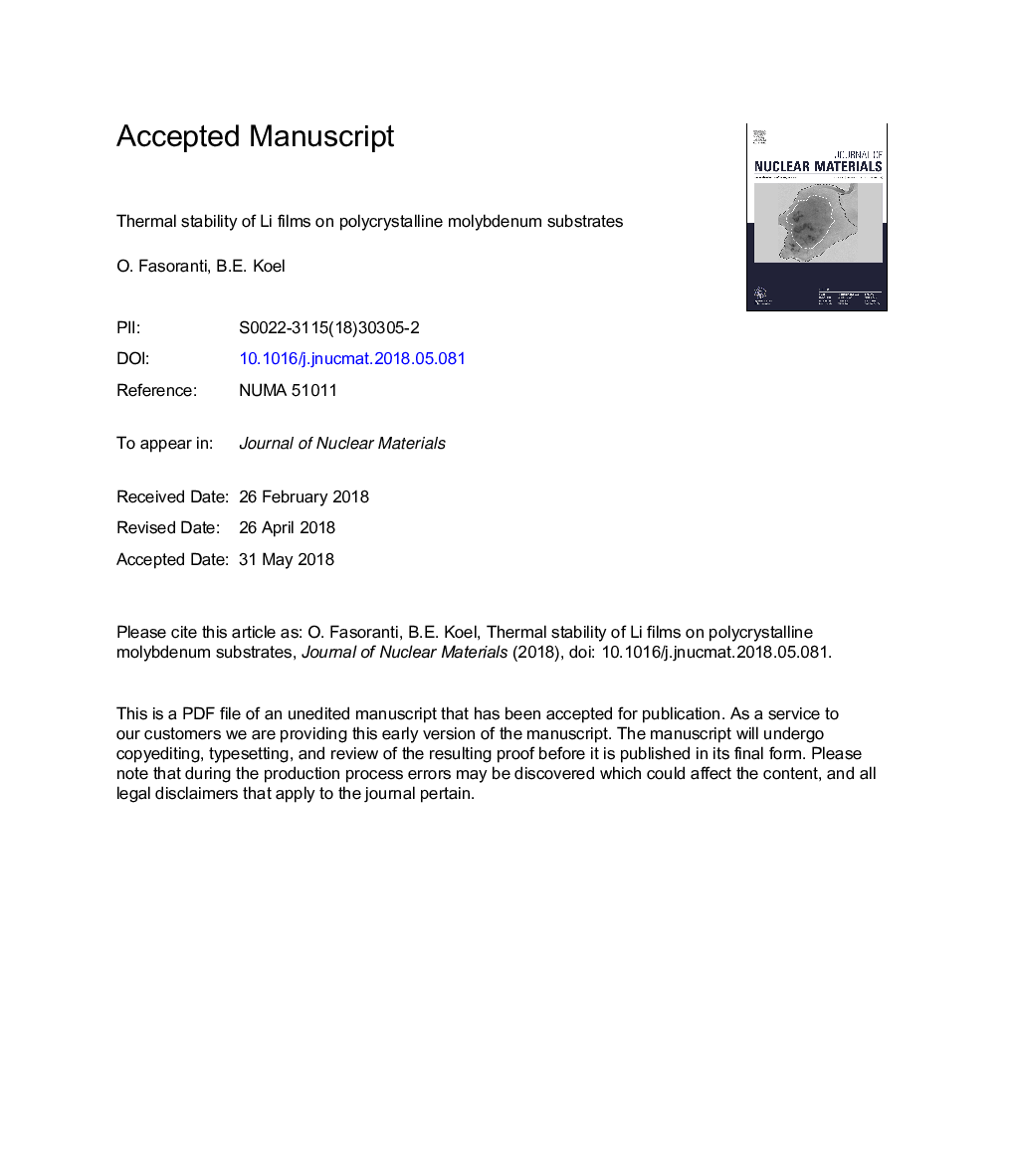| Article ID | Journal | Published Year | Pages | File Type |
|---|---|---|---|---|
| 7963065 | Journal of Nuclear Materials | 2018 | 35 Pages |
Abstract
Lithium (Li) coatings on plasma facing components (PFCs) have been proposed as potential solutions to first wall and divertor challenges in tokamak fusion reactors. We report on the thermal behavior of ultrathin pure Li films deposited on polycrystalline substrates of molybdenum (Mo) and a molybdenum alloy (titanium zirconium molybdenum, TZM). These Li films were studied under controlled ultrahigh vacuum (UHV) conditions and thermal stabilities were primarily compared via temperature programmed desorption (TPD) measurements. In addition, on TZM, which is of particular interest, we obtained additional spectroscopic data using Auger electron spectroscopy (AES) and low energy ion scattering (LEIS) to further characterize the film structure and composition. The monolayer of Li in these films in contact with the substrate is bound much stronger than in bulk Li films, and thermally desorbs at much higher temperatures. Interfacial Li on Mo(poly) has a higher thermal stability than that on TZM(poly), where the limiting values for the desorption activation energies, Ed, are 3.56 and 2.84â¯eV, respectively, in the low coverage, high temperature desorption tail. LEIS indicates some clustering or interdiffusion of the Li films on the TZM substrate at 500â¯K. No appreciable irreversible absorption of Li occurs on Mo or TZM under the conditions of these experiments.
Keywords
Related Topics
Physical Sciences and Engineering
Energy
Nuclear Energy and Engineering
Authors
O. Fasoranti, B.E. Koel,
